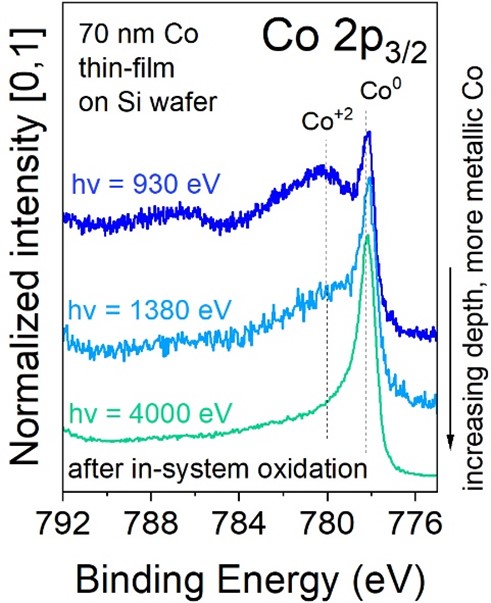Department Interface Design
Fischer-Tropsch synthesis for sustainable aviation fuels
Fischer-Tropsch synthesis (FTS) offers an alternative pathway to produce high-quality sustainable hydrocarbons, including linear alkenes, diesel and jet fuel through the conversion of syngas, a mixture of hydrogen and carbon monoxide. The Fischer-Tropsch process is currently used to convert coal or natural gas to fuels on a large, industrial scale. Cobalt (Co) is widely utilized as an active metal due to its high activity, while promoters such as Manganese (Mn), enhance this catalytic performance and selectivity towards long-chain hydrocarbons (i.e. C5+ fractions). Metal oxides like Al₂O₃, SiO₂, and TiO₂ as support improve metal dispersion, increasing active sites and providing mechanical stability.
The CARE-O-SENE project aims to develop Cobalt-based optimized catalysts for green kerosene with low-temperature Fischer-Tropsch synthesis.
At EMIL, in system preparation and measurements of model catalysts (single crystals, thin-films) that closely mimic commercial catalysts provide a molecular understanding of underlying processes during FT operation. The combination of soft (100-2000 eV) and hard (2-10 keV) X-rays allows for elemental depth analysis, in-system thin-film deposition and treatment without exposure to air during transfer (see example in Fig.1).
For the Care-O-Sene project, a new high-pressure reactor was developed within the EMIL infrastructure. The reactor is connected to the UHV backbone, allowing in-system preparation, post-treatments and advanced characterization of catalysts by lab- and synchrotron-based spectroscopies at SISSY-I. The the in-situ/operando cell is compatible with soft-/hard- XAS at the OÆSE station.

Fig. 2 dedicated reactor cells for lab-based or synchrotron FTS experiments a) In-system high pressure reactor (up to 20 bar, 600°C) connected via backbone at EMIL with the SISSY-I station and b) In-situ/Operando soft-/hard- XAS cell (up to 15 bar, 300°C for OÆSE station. These are also applicable for other reactions.



